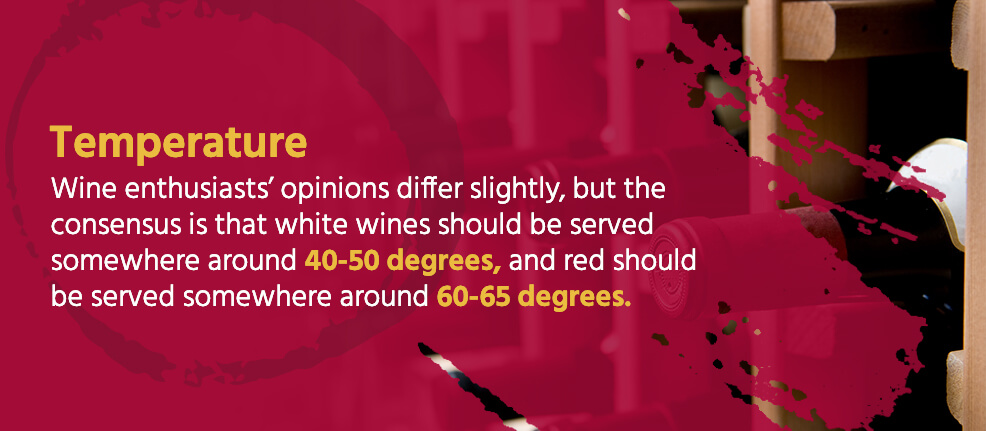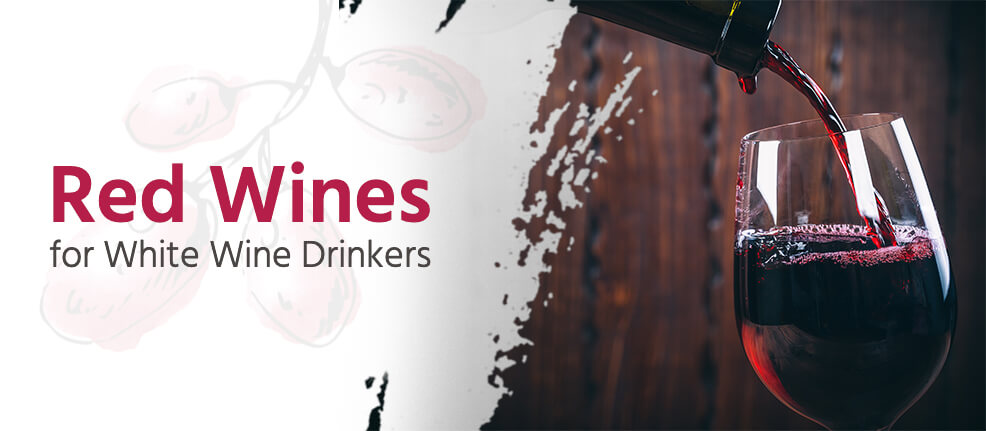
If you drink wine, chances are you fall into one of two distinct categories — white wine or red wine lovers. A recent national survey showed most people prefer red wines. We know — if you’re a white wine drinker, you’re wondering how that’s possible. There are plenty of white wine drinkers who can’t imagine enjoying a glass of dry red. A chilled glass of a fruity white seems so much more refreshing.
While it may seem as if these two categories of wine drinkers are forever separated, we believe there are red wines for white wine drinkers.
Various characteristics go into the glass of wine you love. Is it light or heavy? Does it taste fruity or bitter? Is the alcohol content high or low? Stereotypes say that whites are light, refreshing, fruity wines and reds are more complex, savory, dry wines. But believe it or not, plenty of reds have many of the same characteristics as white wine. If you’re willing to try, you may find a red wine you enjoy.
Let’s say you want to know what all the red wine hype is about — where do you begin? To help you choose a red wine, we’ve created a list of some of the most popular reds with flavor profiles similar to whites. We’re sure that as you read through the details of each of these red wines, you might be tempted to give them a try.
Rosé
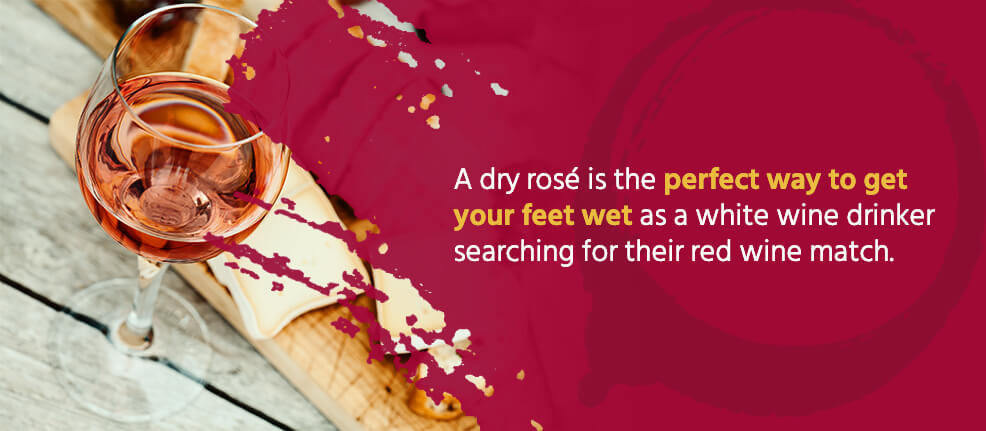
Our very first recommendation is to start with a dry rosé wine — yes, we know this may make some wine connoisseurs cringe, but hear us out. This choice is the perfect way to get your feet wet as a white wine drinker searching for their red wine match.
Here’s why. The winemaking processes for white and red wine are different. Once the grapes are harvested and juiced in red winemaking, the juice is left to soak together with the grape skins, seeds and stems for an extended period, which is a big part of the reason the flavor profile can be so different.
In the rosé winemaking process, red grapes are used, but they only soak with the grape skins for a brief amount of time — usually just a few days — hence a pink color instead of red. It’s the perfect start to get used to red grapes and get a sense of the different flavors that come from this slightly different winemaking process. Rosé can also be served chilled, which is familiar to you as a white wine drinker.
Rosé wine pairings are also similar to what you’d enjoy with a glass of your favorite white. The often bright and crisp tasting notes complement lighter dishes — like chicken, fish and shellfish — that you can also enjoy with various white wines. When trying this red wine for white wine drinkers, you don’t even need to change your dinner menu.
Pinot Noir
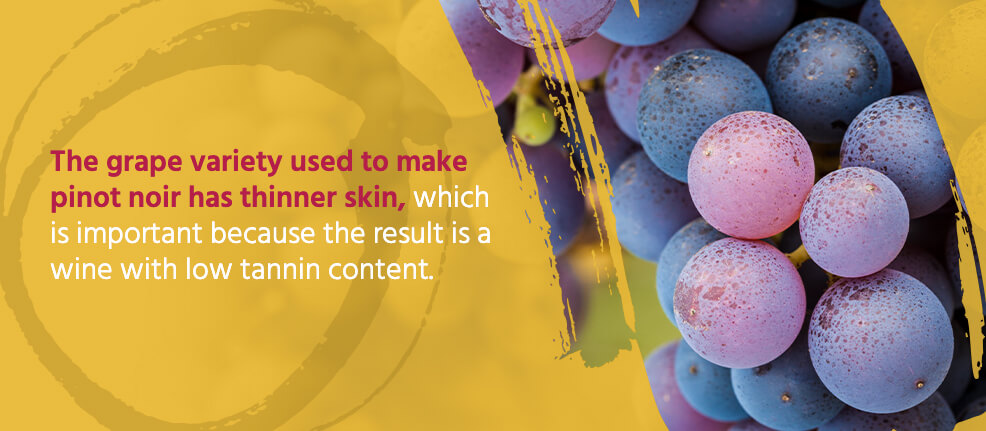
Believe it or not, pinot noir and chardonnay grapes are usually grown together — either on the same vineyard or in the same region. Pinot noir is considered a softer red, which is more likely to please a white wine drinker. The grape variety used to make pinot noir has thinner skin, which is important because the result is a wine with low tannin content.
Tannins create the dry feeling in your mouth you associate with red wines. To reduce that feeling with a low-tannin pinot noir means you may find yourself enjoying a glass of red over your usual white.
The best pinot noir for a white wine drinker is from the Burgundy region. There, grapes grow in a cooler climate and are more likely to produce wine with savory fruit flavors, like lemon, quince and apple. These flavors should sound familiar, as they are likely within your favorite white wine. Since pinot noir is a versatile wine, it can complement various dishes — even ones with heavier flavors you may not have enjoyed with white wine.
As a bonus, this is another red wine you can drink chilled. You don’t have to worry about adjusting to both the new flavor and new serving temperature at the same time. A chilled pinot noir will have the same cool, crisp and light flavors you’ve come to love from your white wine.
Gamay or Beaujolais
This wine may go by the name of the grapes, gamay, or the name of the region where the grapes are grown, Beaujolais. Gamay is a grape variety that has been around since the 1300s, yet somehow, it’s not very well-known. That’s mostly because it grows in the same region of Burgundy as the pinot noir grapes. In that area, pinot noir has always overshadowed gamay. But in one subregion of Burgundy called Beaujolais, the gamay grape has managed to outshine its popular relative.
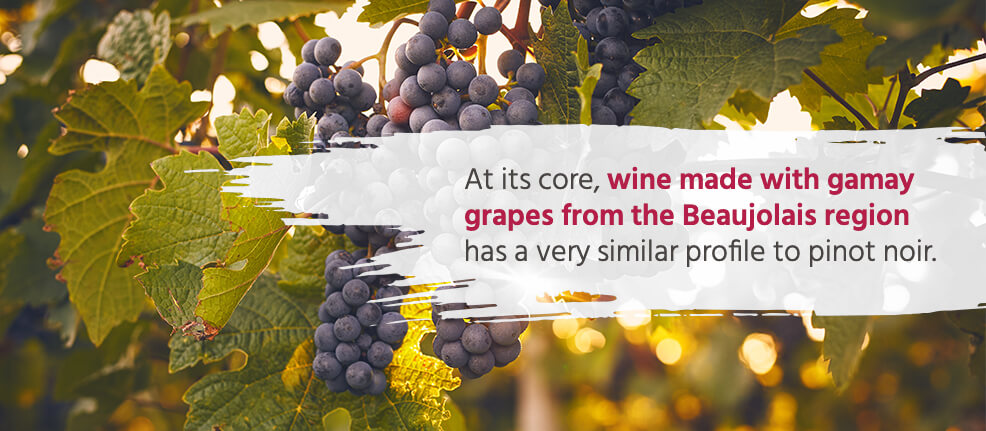
At its core, wine made with gamay grapes from the Beaujolais region has a very similar profile to pinot noir — light-bodied, low tannin content and fruity, with tart cherry, raspberry and banana flavors. It’s also best served slightly chilled, ideally to about 60 degrees. And, since it’s the lesser-known of the two wines, a bottle of gamay is often more affordable than one of pinot noir.
Enjoy a glass of gamay with aged cheeses, as you would with a Chardonnay. Or, try it with a fish dinner, as you would with a pinot gris.
Barbera
While barbera grapes are primarily grown in Northern Italy, the best barbera red wine for white wine drinkers has roots in Australia and right here in the United States. The reason is that the Italian version tends to be more bitter — a taste that will likely scare away white wine drinkers.
Don’t let the dark shade of red fool you. This light-bodied wine has low tannin levels and higher acidity, both characteristics of white wine. The versions from Australia and the United States, especially California, come with more fruity flavors that include red cherries, strawberries and blackberries. That fruitiness pairs perfectly with a chilled temperature of about 60 degrees. It also pairs well with herb-infused dishes and mushrooms, similar to how you’d enjoy a sauvignon blanc.
Schiava
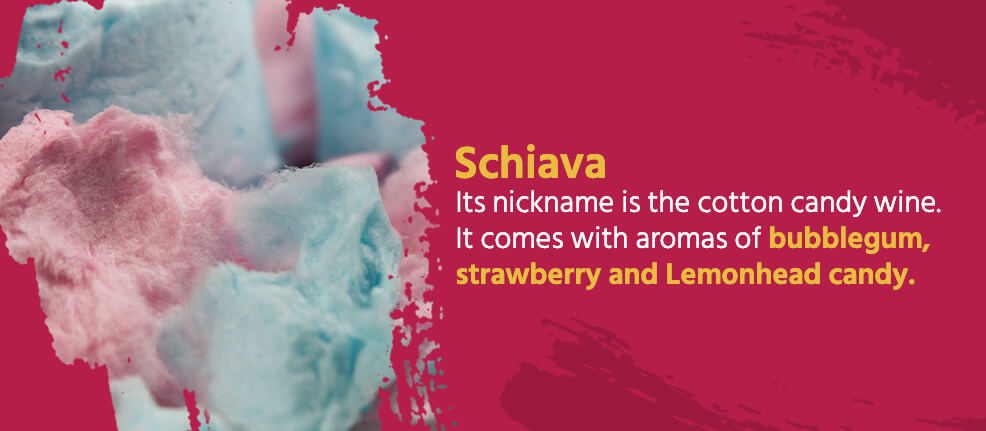
Some wines that come from grapes grown in Italy may be a great fit for a white wine drinker, and schiava grapes are one of these varieties. These grapes also go by the name vernatsch, Black Hamburg or trollinger. Most of them come from a valley in the Alps known as Alto Adige.
What is it about this type of wine that appeals to white wine drinkers? Its nickname is the cotton candy wine — it comes with aromas of bubblegum, strawberry and Lemonhead candy. Pretty much everything about it is light, from the color to the body. Compare the pairing possibilities to a riesling, which complements tofu dishes, shrimp or chicken. Those meals make a congruent pairing with the simple flavors of schiava wine.
One complex aspect of this wine is the naming. In the region of Italy where most schiava grapes grow, there are three official languages — Ladin, German and Italian. Depending on the area, you may see schiava wines labeled as edelvernatsch, kleinvernatsch or St. Maddelena/St. Magdalener DOC — all varieties of schiava grapes.
Rather than worrying about the complex labels, we recommend trying a glass of schiava nera or schiava grigia.
Lambrusco
Lambrusco grapes have been around even longer than gamay grapes. While it’s tough to put an exact date on these grapes, many believe they may have roots all the way back to 160 BC. These wines are almost always semi-sparkling, but not all Lambrusco wines are created equal. As a white wine drinker, you want to focus on the Lambrusco di Sorbara, a high-quality variety. Lambrusco di Sorbara is the lightest of the Lambrusco wines, appearing to have a color that may even be more pink than red.
You’ll find these wines to be light and refreshing, with sweet aromas of orange, cherries, violets and watermelon. The levels of fruit flavors in this particular wine are high. While these aromas are sweet, and the body light and refreshing, you’ll notice it is also a dry wine with a medium level of tannins. The dry Lambrusco di Sorbara with its fruity notes contrasts a rich, creamy pasta dish, much like a light white zinfandel.
Zinfandel
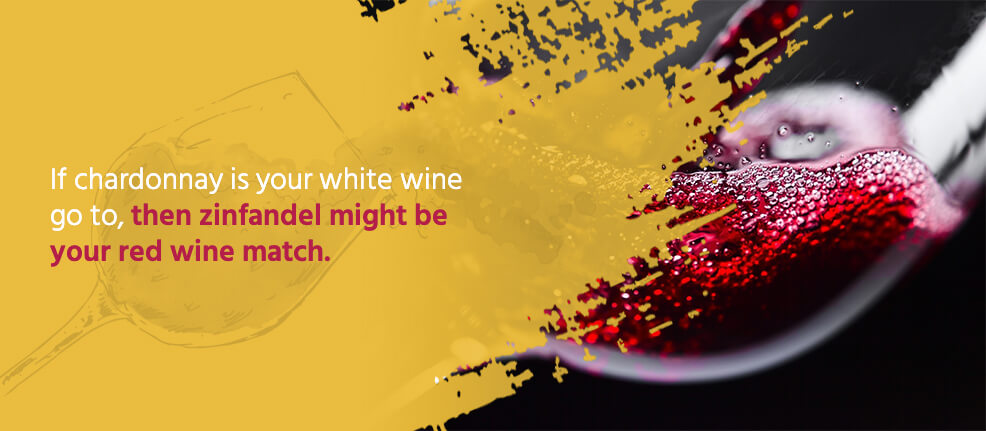
For the right white wine drinkers, this red wine just might do the trick. While the typical white wine has a light body, there are also fuller-bodied whites, like a chardonnay. If chardonnay is your white wine go-to, then zinfandel might be your red wine match. The zinfandel grape can be found in over 10% of all Californian vineyards. It’s a key part of the California red wine industry. This fuller-bodied red is juicy, round and low on tannins. Serve it chilled — you won’t have to worry about dulling the fruit flavors in this glass.
You may already know about zinfandel wines as a white wine drinker. In the United States, the white zinfandel is a popular varietal. It’s more similar to a slightly sweet rosé and lighter in color than its red counterpart. Still, the familiarity makes zinfandel a good introductory red wine for white wine drinkers.
Merlot
Merlot is the second most popular red grape in America, and it also has a reputation for being an easy-drinking red. It’s a great introduction to red wines for white wine drinkers. Its history lies in being one of the grapes included in the prestigious Bordeaux wine blend in France in the 1700s. When it came to the United States, Americans decided it was worthy of standing alone and made wines using 100% merlot grapes.
These grapes are in the same family as the white grape variety known as sauvignon blanc. If your favorite white is a rich, California sauvignon blanc, a natural red wine fit might be a merlot. The best place to start is with a domestic and affordable merlot.
While merlot isn’t considered a low-tannin red, it is often made in a low-tannin style. That’s part of the reason you won’t find the bitterness you usually do with a mid- to high-tannin wine. Instead, the cherry flavor pairs well with meats like lamb, which also goes well with an oaky chardonnay.
Malbec
Malbec has the same history as merlot, beginning among the grapes in the Bordeaux wine blend in France. However, this grape variety didn’t find much popularity outside France, because it is particularly susceptible to disease and rot. Subsequently, it was tough to grow and keep healthy. It did eventually find a home outside France in the wine region of Mendoza in Argentina. It stayed there, though, and malbec wine wasn’t discovered by Americans until the early 2000s.
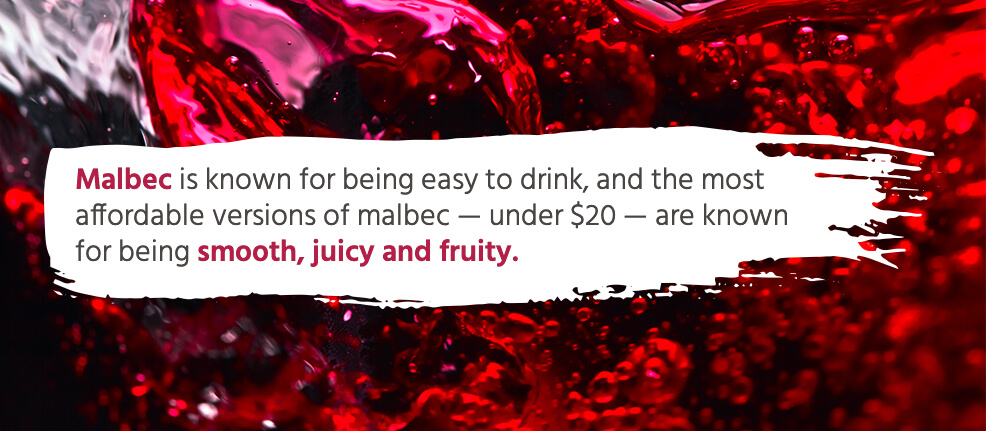
Those who keep up with the latest wine lists won’t get to know malbec wine there. This wine is known for being delicious and affordable — not for its prestige. It’s also known for being easy to drink, and the most affordable versions of malbec — under $20 — are famous for being smooth, juicy and fruity. For a white wine drinker, the less time malbec has to age in oak barrels, the better.
While you should serve malbec at room temperature, it’s still a suitable option for white wine lovers. It contrasts earthy foods with its fruity flavors, much like your favorite white varietals.
Etna Rosso or Frappato
Both of these wines come from grapes grown on Mount Etna on the Italian island of Sicily. While pinot noir and gamay are more well-known, wines from this area have become more popular in the United States. Every good wine enthusiast knows climate and soil impact the taste of wine — and Etna Rosso and frappato are both prime examples of this.
Both are made from grapes grown in volcanic soil. The result is a light-bodied red, with acidity comparable to white wine. The fruitiness is present, too, but in the form of strawberry flavors. Pour yourself a chilled glass of either of these choices, as they’re most refreshing served lightly chilled. These varietals are versatile, like pinot noir, making them suitable for white wine-friendly dishes, like fish and poultry.
Grenache
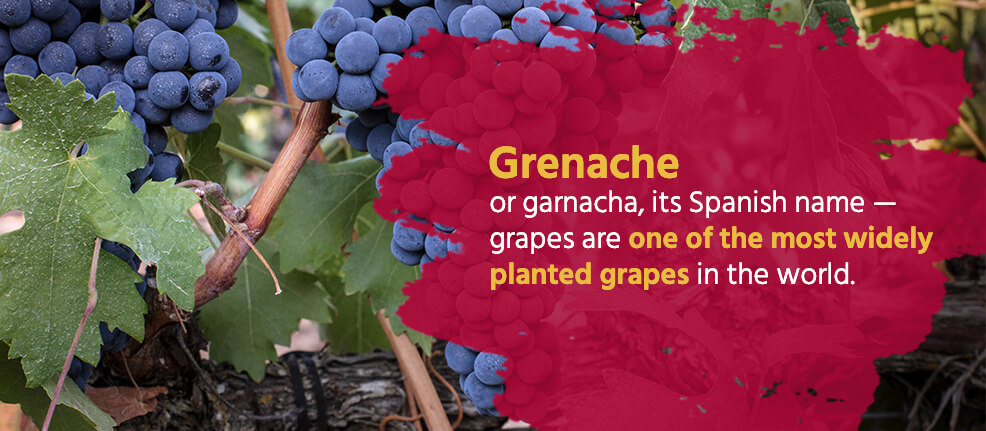
Grenache — or garnacha, its Spanish name — grapes are one of the most widely planted grapes in the world. You’ll find this grape variety in some of the most famous wines, and it’s easy to see why. This wine is known for its berry flavors, specifically strawberries and raspberries. Some have even compared its taste to that of a Fruit Roll-Up.
The two different names for this type of wine tell the story of its beginnings. The grape was first discovered in the northern region of Spain, known as Aragon. At that time, it was known by its Spanish name but was not yet very popular. As a result of the location, near the border of France, this grape variety made its way to the Languedoc-Roussillon region of southern France. Here, the French called it grenache, and it became famous shortly after that.
While grenache wines can have more tannins than some of the other light reds we’ve mentioned, you shouldn’t have to worry about dryness or bitter flavors if you stick to an affordable version under $20. Spanish garnacha or grenache-based blends from Roussillon in France are both great wines to get started. These wines can hold up to hearty, comforting dishes, which you may not get to enjoy with your usual white varietals.
Red Wines That Taste Like White
When you’re looking for a red wine that tastes like a white, there are several factors to consider. The easiest way to reveal these factors is to simply ask the question, “What is it about red wines that white wine drinkers can’t stand?” If we asked you, we’re sure your answer would be something along the lines of:
- Red wines are too dry or bitter.
- Red wines are too heavy.
- Red wines are too alcoholic.
Therefore, you can see why if you’re searching for a red wine you’ll enjoy, you should look for one with a light body, low tannin content and fruity flavor. What exactly does all of that mean for those of you who may not be wine connoisseurs? We’ve included some details on each of these aspects, so you know exactly what you’re searching for in a red wine.
Light Body
When you see a comment about the wine’s body, it’s also often referring to the viscosity or “mouthfeel.” In other words, how light or heavy does the wine feel in your mouth? You may also notice the viscosity as you swirl wine in your glass. Heavy-bodied wines linger on the sides more than a light one would. If you’re an avid white wine lover, chances are you like a lighter-bodied wine, because whites tend to be light.
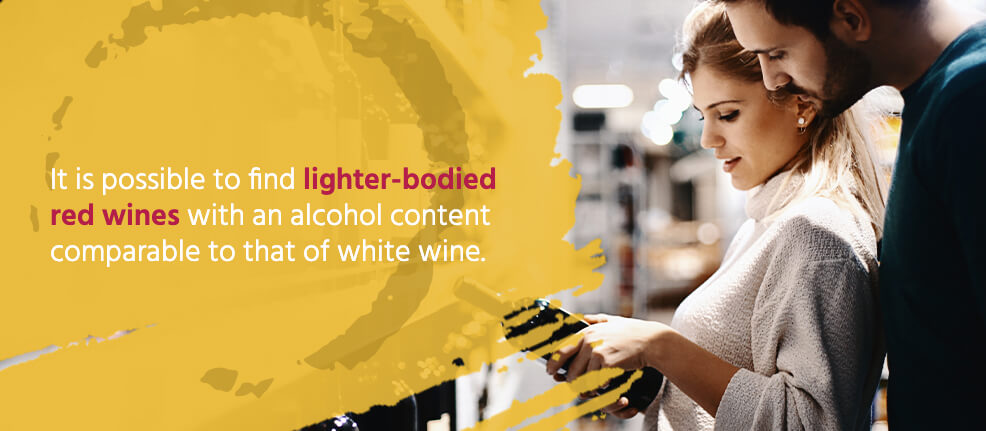
Body and alcohol content are a pair, so if you prefer a lighter wine, it’s probably less alcoholic. The good news is, not all red wines come with a full body and higher alcohol content. It is possible to find lighter-bodied red wines with an alcohol content comparable to that of white wine. You just have to know where to look for them.
Low Tannin Levels
Tannins are a natural compound found in grape skins, seeds and stems, and they have a natural drying effect in the mouth. As you may guess, a high level of tannins is more common in red wine due to the red winemaking process. With the wine exposed to the grape skins, seeds and stems longer, it can develop a higher tannin content. White wine, on the other hand, is made without those grape components, giving it a lower tannin content and making it less dry.
If you’re a white wine drinker looking for a red wine, look for ones that come from grapes with fewer tannins. Burgundy, dolcetto and barbera, pinot noir, Sangiovese, Spanish Rioja, Beaujolais and tempranillo are good options. You might also consider a wine that was made with limited exposure to the grape skins, seeds and stems, like a rosé.
It’s also important to note whether a red wine was aged in oak barrels, because oak adds a lot of tannin to the wine throughout the aging process. While these tannins are usually said to be “sweeter,” it’s probably best to avoid reds aged in oak as a white wine drinker looking for red wines — especially when just starting.
Fruit
Both white and red wines can claim to be fruity, but a fruity white and fruity red are different. If you think about a fruity white wine you love, it probably has flavors of apple, lemon, peach, citrus or pear. Fruity reds, on the other hand, have flavors of cherry, raspberry, blueberry, plum and blackberry.
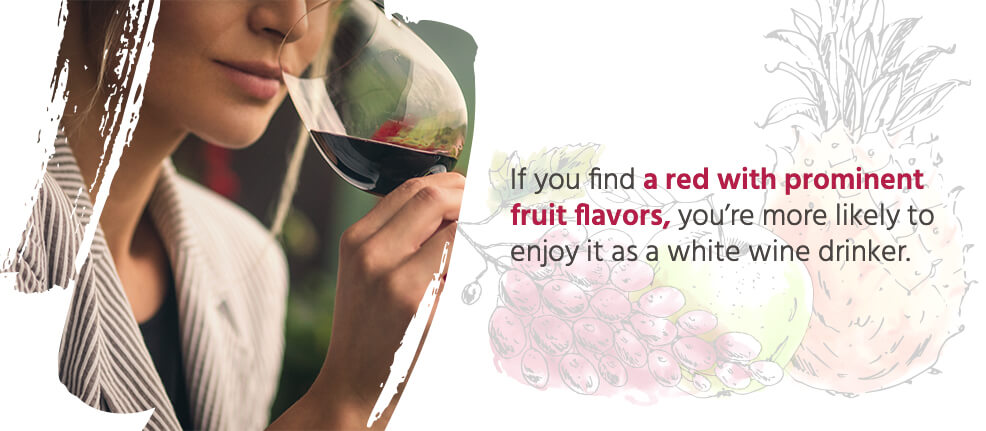
But the differences in fruit flavors don’t make red wines a lost cause. If you find a red with prominent fruit flavors, you’re more likely to enjoy it as a white wine drinker. Opt for fruity reds over those that boast earthiness. Earthiness can be a white wine drinker’s worst nightmare, as it can be dry and harsh.
Temperature
Another factor that isn’t a staple part of the wine but is important for white wine drinkers is the serving temperature. Imagine yourself sitting outside on a warm day, sipping on a glass of your favorite white wine. In this daydream, you’re likely drinking a chilled glass.
Whites are almost always served cooler than glasses of red because warmer temperatures make the tannins more prominent. While you may enjoy the refreshing nature of a chilled glass of white, the less prominent tannins are another reason you enjoy your wine chilled.
Wine enthusiasts’ opinions differ slightly, but the consensus is that white wines should be served somewhere around 40-50 degrees, and red should be served somewhere around 55-65 degrees. It’s possible to overchill your glass of wine, which can mute the flavors.
If you’re searching for the best red wine for white wine drinkers, consider tasting your glass of red at the same temperature you’d enjoy a white. The subtle difference, combined with a red wine with a lighter body, low tannins and fruity flavor, may be exactly what you need to begin embracing red wines.
Shop for White and Red Wines Online
Whether we’ve convinced you to give red wines a try, Marketview Liquor has a wide selection of both red and white wines. All these wines are easy to order online by the bottle or case and have shipped anywhere in the United States. Mix and match a customized case of select wine that includes a few of your favorite white wines and a few of the reds we’ve mentioned.
We have an extensive online wine selection, and we’re sure you’ll find the wine you want in a price range you can afford to pay.
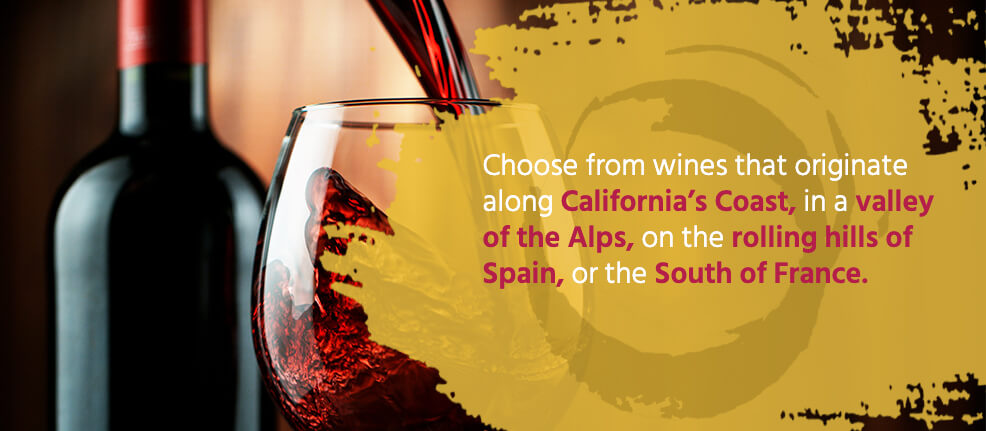
Choose from wines that originate along California’s Coast, in a valley of the Alps, on the rolling hills of Spain or in the south of France. Whether you’re searching for a high-end bottle to give as a gift or a case of affordable favorites with which to stock your pantry, our selection includes them all.
Get started by searching for your new red wine match or your tried-and-true white wine favorite on our website.

